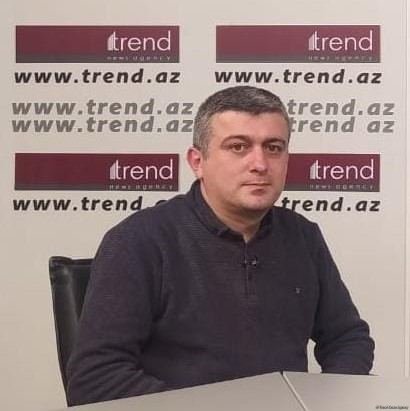BAKU, Azerbaijan, April 4. Iran has paused its nuclear program commitments under the Joint Comprehensive Plan of Action (JCPOA), which includes the US, UK, France, Russia, China, and Germany, for more than four years.
During this period, Iran has essentially carried out its nuclear activities unabated. While the International Atomic Energy Agency (IAEA) has often identified suspicious components of Iran's nuclear program, Iran has constantly refuted these charges or sought to emphasize its transparency efforts.
The JCPOA came into effect in January 2016. However, in May 2018, the US withdrew from the plan, and sanctions were imposed on Iran in November of the same year. In 2020, Iran said that it would no longer comply with the constraints specified in the Iran nuclear deal.
The IAEA has expressed concern about its limited monitoring of Iran's nuclear facilities, citing Iran's recurrent advances in uranium enrichment. In response, Iran defends its actions, claiming the right to take unilateral measures in its nuclear program without being held accountable to any other institution.
Furthermore, towards the end of 2020, the Iranian parliament decided to implement a nuclear strategic plan in response to the introduction of sanctions. Following this decision, the country delayed the implementation of other procedures and protocols stipulated in the nuclear accord until February 23rd of the same year. At the same time, the IAEA's verification mechanism was cut by 20-30 percent.
It is obvious that without constant monitoring, suspicions can arise at any time. Iran's refusal to offer IAEA inspectors access to all nuclear sites, as well as its refusal to allow cameras to monitor every action, only adds to these fears. The IAEA and other stakeholders are concerned about Iran's decision to enrich uranium beyond the agreed-upon level of 3.67 percent, boosting it to 20 percent and potentially 60 percent. Despite Iran's insistence that it has no interest in nuclear weapons, its activities create concerns.
On December 26, 2023, media reports cited the IAEA, revealing that since late November 2023, Iran has been rapidly enriching uranium to 60 percent at its Natanz and Fordow nuclear facilities. This means that each month, the amount of uranium enriched to this level has been increasing by approximately 9 kilograms.
If Iran reaches the 60 percent uranium enrichment level, the possibility of building an atomic bomb becomes much more realistic. To put it in perspective, the volume of enriched uranium needed for just one atomic bomb is 42 kilograms. With sufficient 60 percent enriched uranium, Iran could potentially manufacture three atomic bombs, and this enrichment process is rapidly progressing.
While neither side has verified that Iran has created an atomic bomb, the capability could quickly become a reality, with Iran potentially announcing weapon readiness within a few months.
The issue is that current conflicts around the world, particularly in Ukraine and the Middle East, have drawn attention away from Iran's nuclear activities. As a result, Iran is allowed to continue its enrichment programs virtually unfettered. It is actively expanding its centrifuge numbers for uranium enrichment, pursuing various enrichment strategies, and collecting considerable amounts of enriched uranium within its borders.






